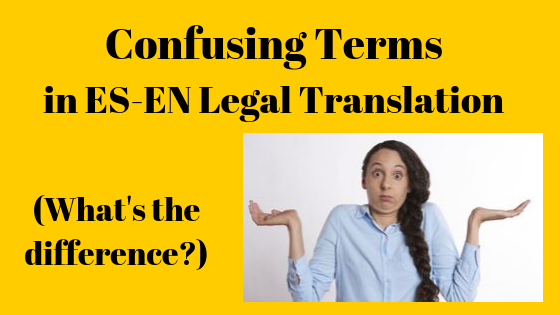
Way back in December 2017, I published an entry on the (then in force) 2010 “Incoterms (in Spanish and English) and what they mean.” , with a detailed bilingual chart describing each one. In this post I’m reviewing the information provided at that time for the many new readers of this blog who may have missed it, including the new DPU (formerly DAT) term in the amended 2020 Incoterms. A graphic showing the updated terms is available in this Incoterms 2020-responsibility chart, courtesy of Air and Surface Logistics.
International Commercial Terms (“Incoterms”) are eleven internationally-acknowledged standard trade terms created by the International Chamber of Commerce (ICC)* to be used in sales contracts. They specify:
1) who (whether the seller or buyer) will be responsible for transportation costs, including insurance, taxes and duties
2) where the goods are to be picked up and delivered, and
3) who is responsible for the goods at each step of the transportation process and, particularly, when risk of damage to or loss of the goods passes from seller to buyer.
Below are the standard Incoterms in English and Spanish with a brief schematic explanation of each:
A) Incoterms for multimodal transportation:
EXW Ex Works (named place)–EXW En fábrica (lugar convenido)
Seller places the goods at the disposal of the buyer at the seller’s premises or at another named place (factory, warehouse, etc.). The seller does not need to load the goods on any vehicle, nor clear the goods for export, if applicable. Buyer is responsible for all subsequent risks, transportation costs, taxes and duties from that point forward.
FCA Free Carrier (named place)–FCA Libre transportista (lugar convenido)
Seller delivers the goods to the buyer’s carrier at a designated place. At this point risk passes to buyer, who is then responsible for transportation to the final destination of delivery.
CPT Carriage paid to (named place of destination)–CPT Transporte pagado hasta (lugar de destino convenido)
Seller delivers the goods to a carrier designated by the seller at an agreed place. Seller contracts for and bears the cost of delivering the goods to the named place of destination.
CIP Carriage and Insurance Paid to (named place of destination)–CIP Transporte y seguros pagados hasta (lugar de destino convenido)
Seller delivers the goods to a carrier designated by the seller at an agreed place. Seller not only contracts for and bears the cost of delivering the goods to the named place of destination, but must likewise take out minimum insurance coverage against the buyer’s risk of loss or damage to the goods during transportation. Buyer may choose to contract additional insurance coverage.
DAP Delivered at Place (named place of destination)–DAP Entregado en un punto (lugar de destino convenido)
Seller is deemed to have delivered the goods when the goods are placed at the disposal of the buyer on the arriving carrier ready for unloading at the named place of destination. Seller bears all risks involved in bringing the goods to the designated place.
DAU (formerly: DAT) Delivered at Place Unloaded (named place of destination)–DAU Entregado y descargado (lugar de destino destino convenido)
Seller is deemed to have delivered the goods when, once unloaded from the arriving means of transport, they are placed at the disposal of the buyer at a named terminal at the designated port or place of destination. Seller bears all risks involved in bringing the goods to and unloading them at the terminal at the port or place of destination.
DDP Delivered Duty Paid (named place of destination)–DDP Entregado, derechos pagados (lugar de destino convenido
B) Incoterms specifically for sea and inland waterway transport
FAS Free Alongside Ship (named loading port)–FAS Franco/Libre al costado del buque (puerto de carga convenido)
Seller is deemed to have delivered the goods when they are placed alongside the vessel (e.g., on a quay or a barge) designated by the buyer at the named port of shipment. Risk of loss of or damage to the goods passes to buyer when the goods are alongside the ship, and the buyer bears all costs from that moment onwards.
FOB Free on Board (named loading port)–FOB Franco/Libre a bordo (puerto de carga convenido)
Seller delivers the goods on board the vessel designated by the buyer at the named port of shipment. Risk of loss of or damage to the goods passes to buyer when the goods are on board the vessel, and the buyer bears all costs from that moment onwards.
CFR Cost and Freight (named port of destination)–CFR Coste y flete (puerto de destino convenido)
Seller delivers the goods on board the vessel and risk of loss of or damage to the goods passes to buyer once the goods are on board. Seller bears responsibility for contracting for and paying the costs and freight necessary to bring the goods to the named port of destination.
CIF Cost, Insurance and Freight (named port of destination)–CIF Coste, seguro y flete (puerto de destino convenido)
Seller delivers the goods on board the vessel and risk of loss of or damage to the goods passes to buyer once the goods are on board. Seller not only bears responsibility for contracting for and paying the costs and freight necessary to bring the goods to the named port of destination, but must likewise take out minimum insurance coverage against the buyer’s risk of loss of or damage to the goods during carriage. Buyer may choose to contract additional insurance coverage.



